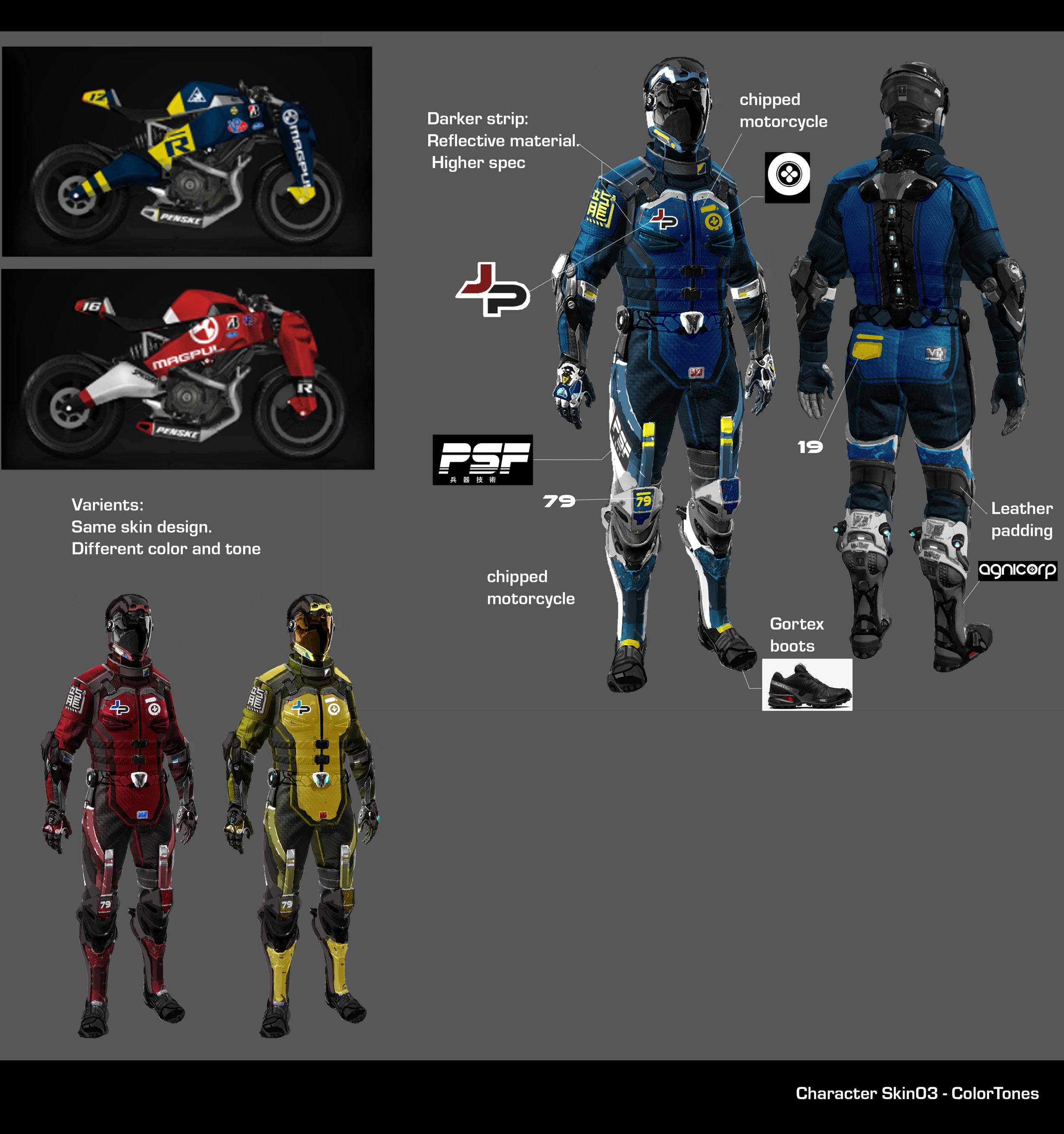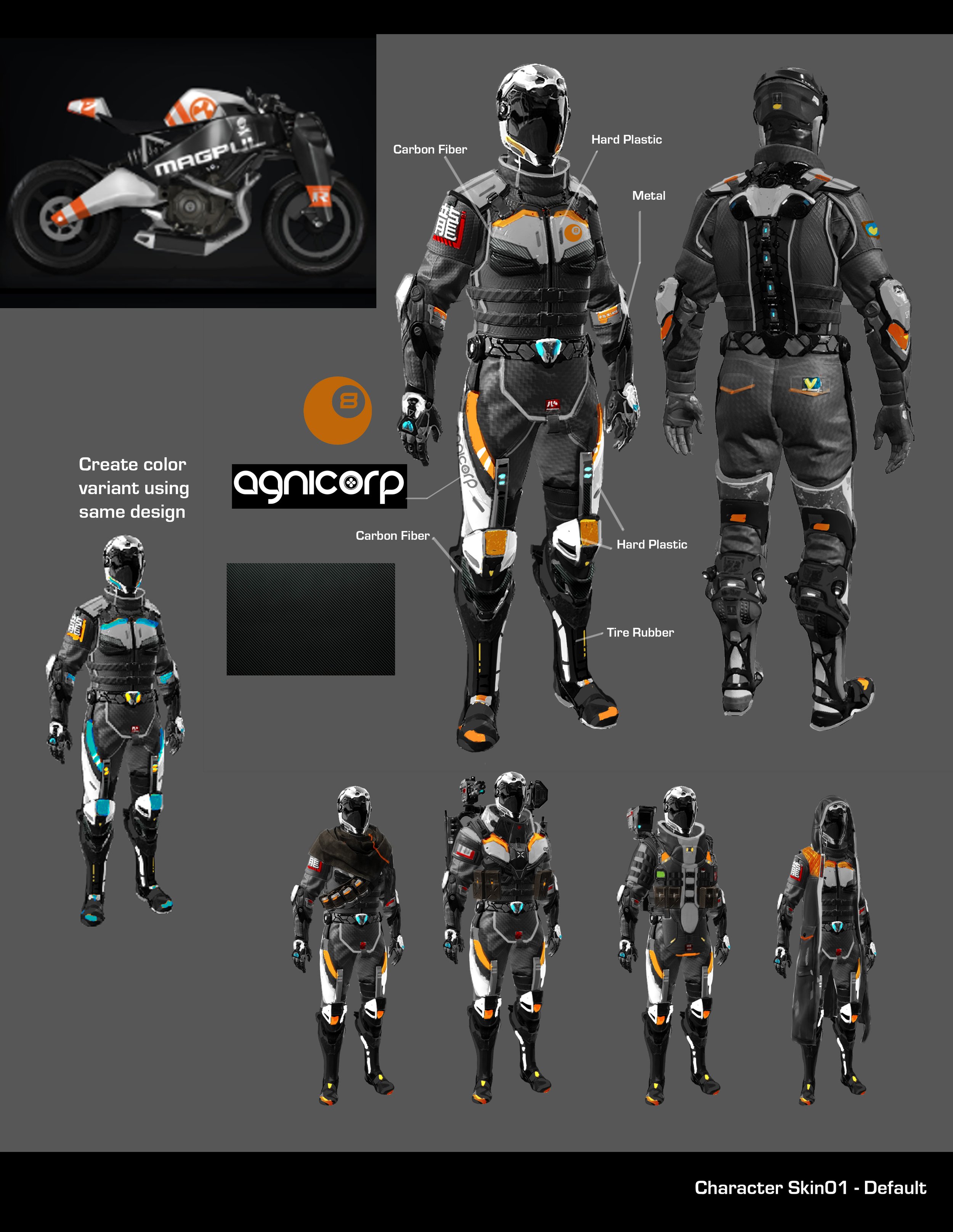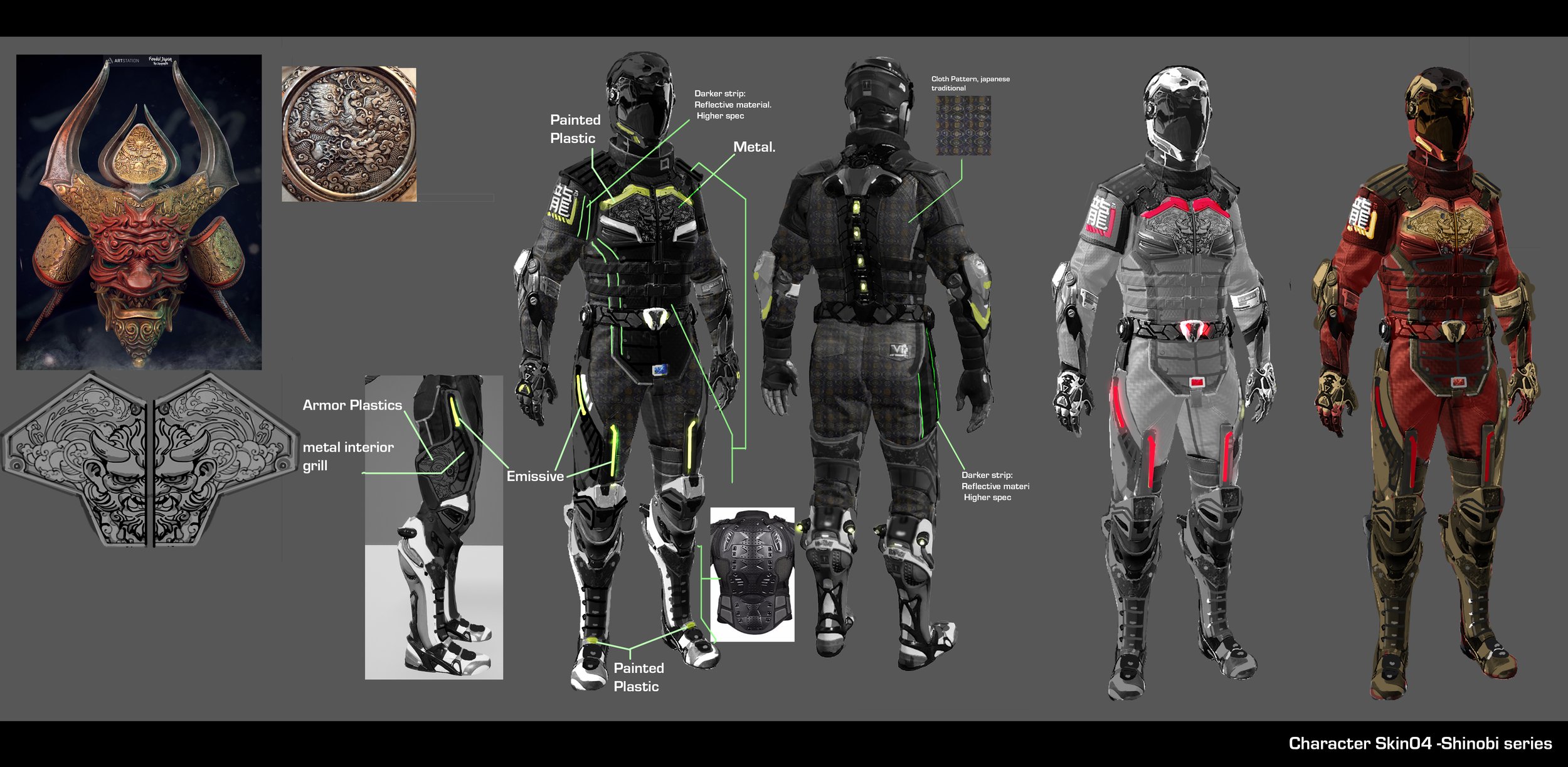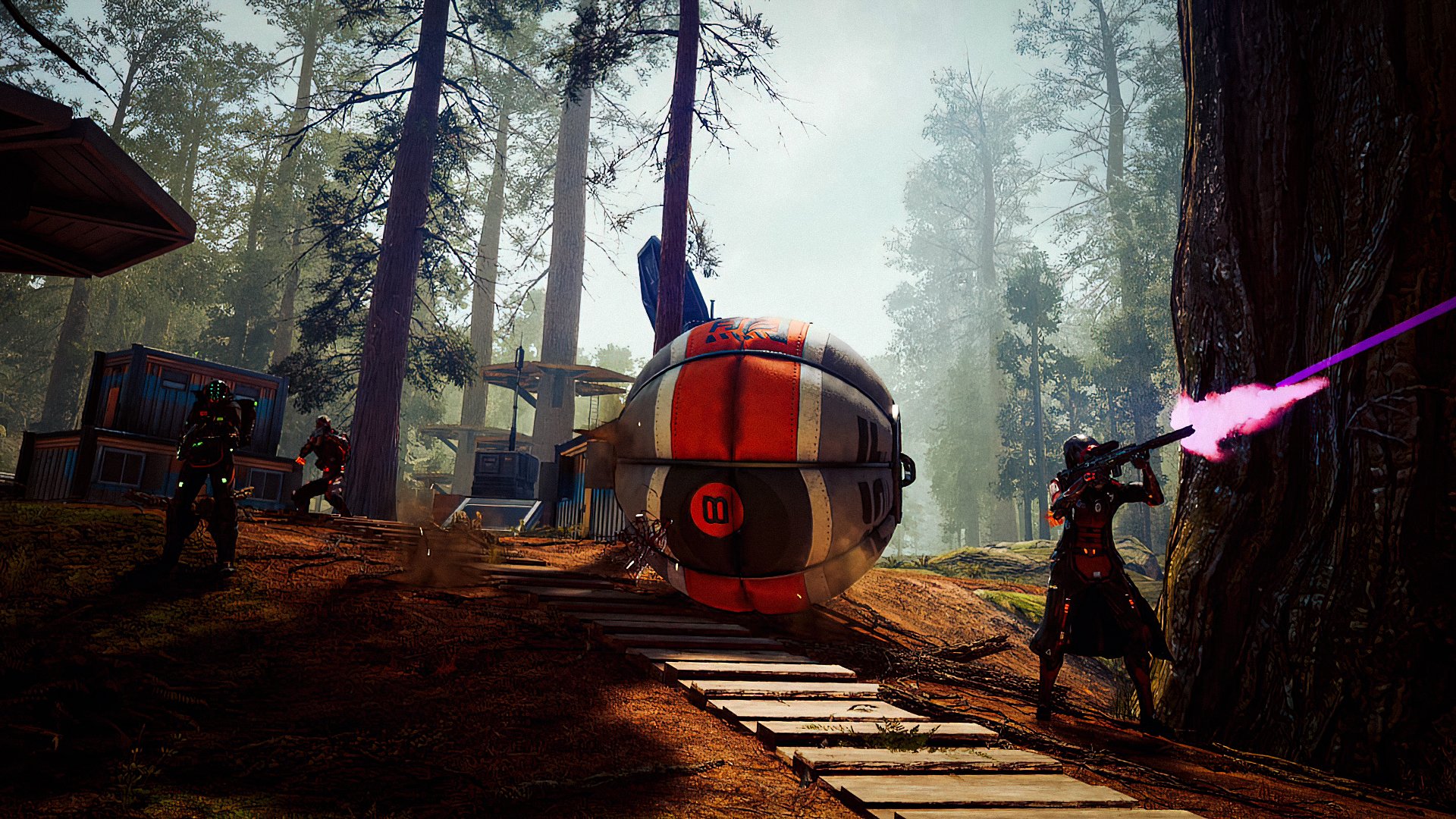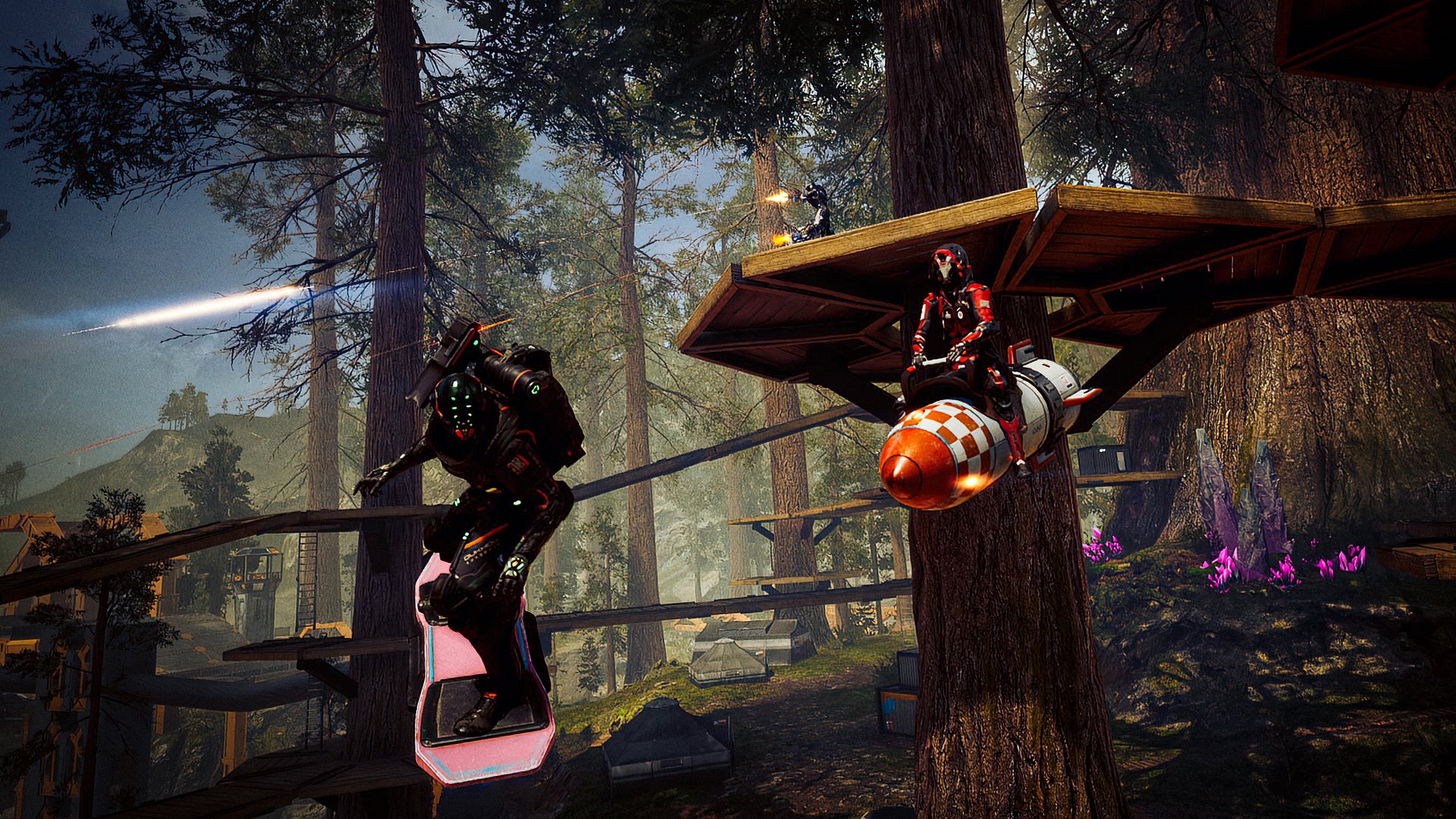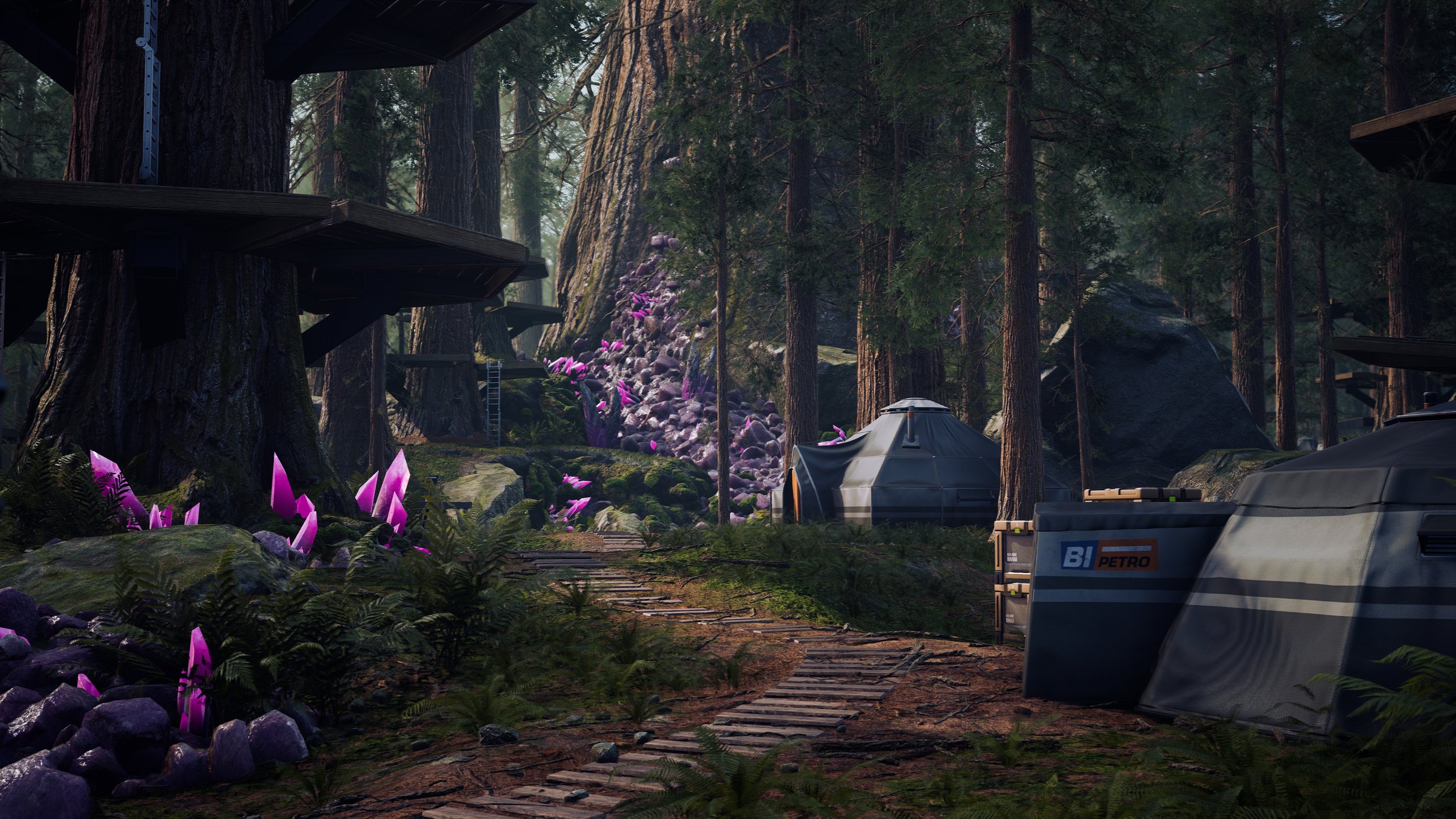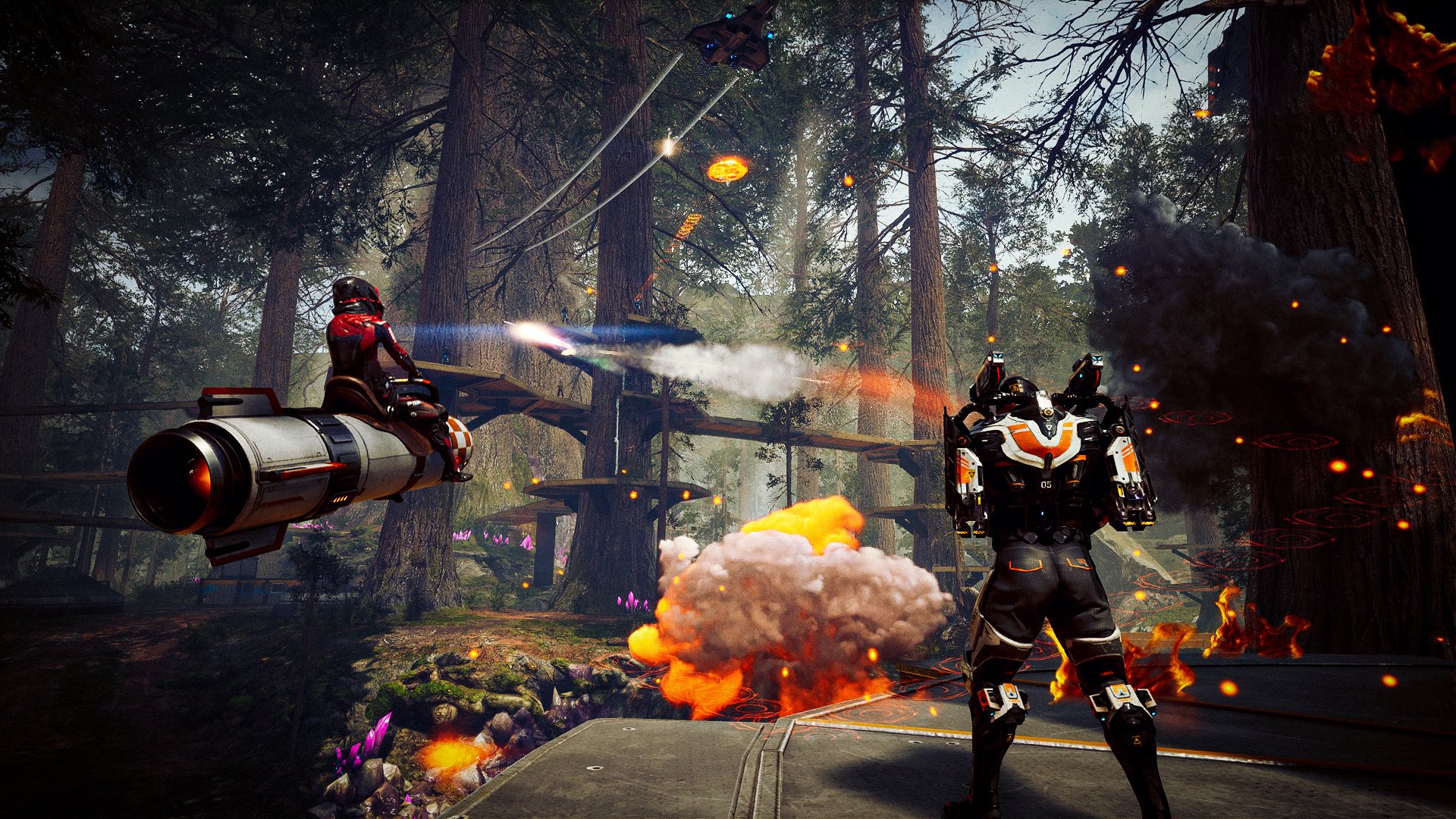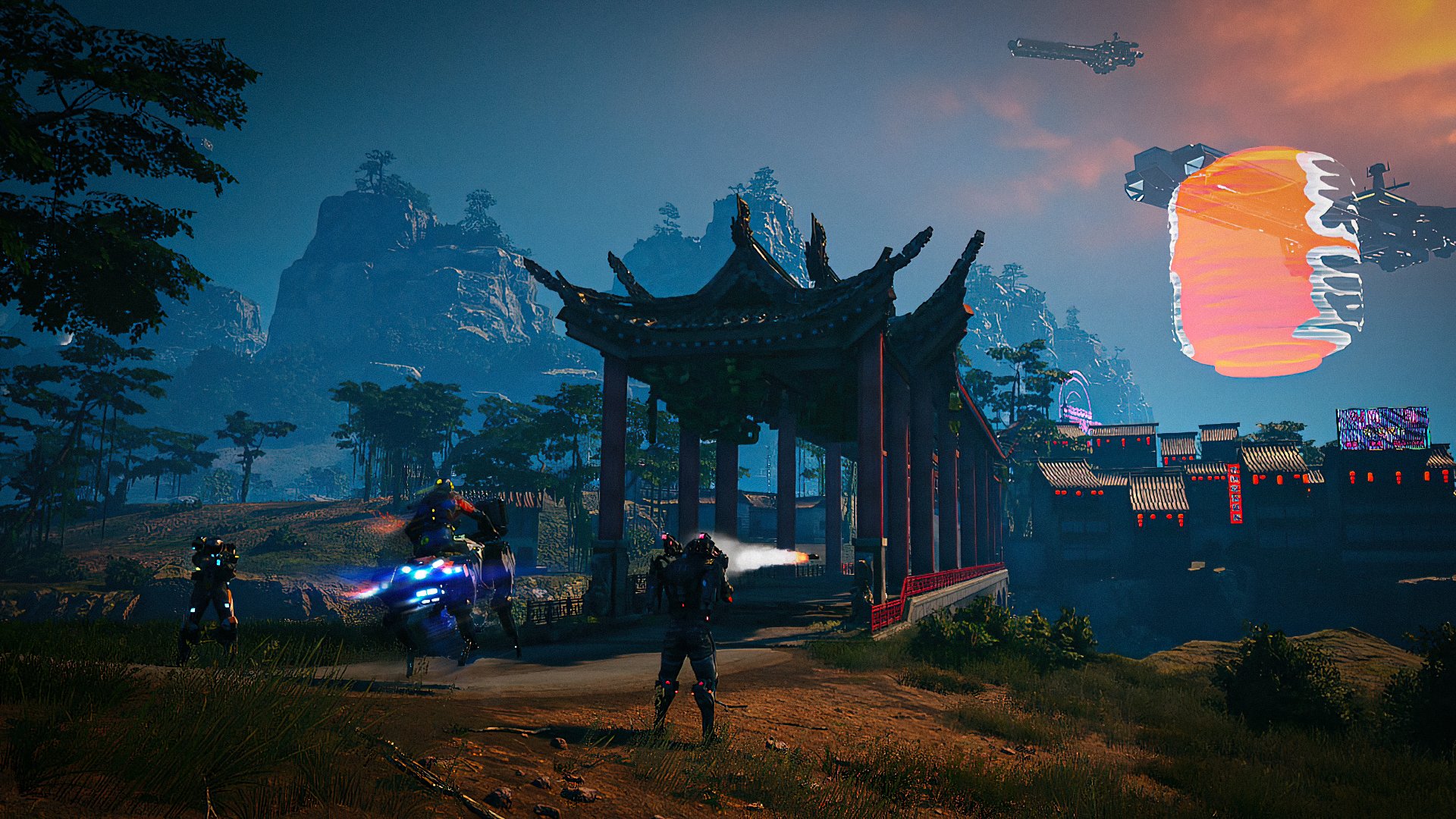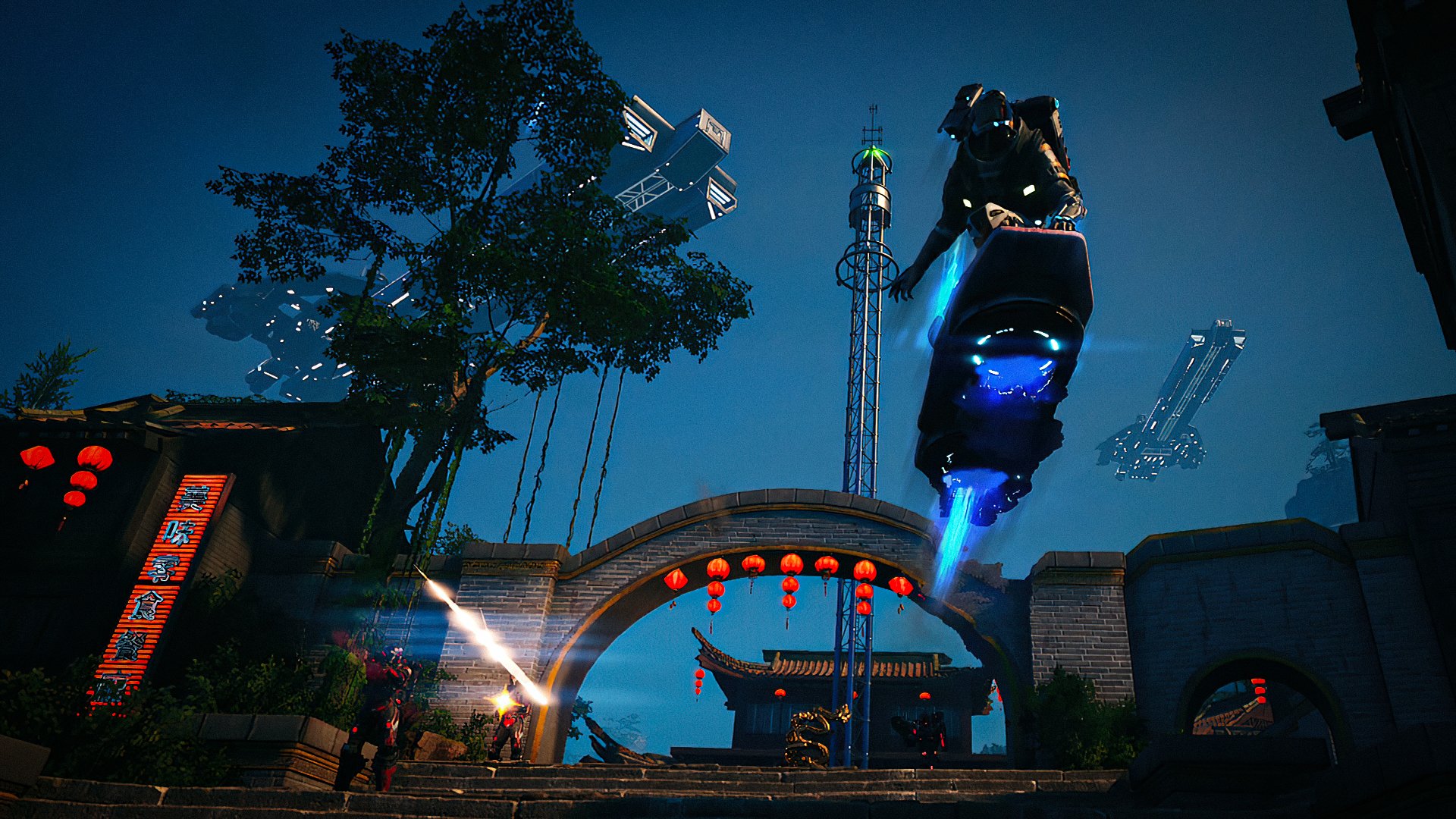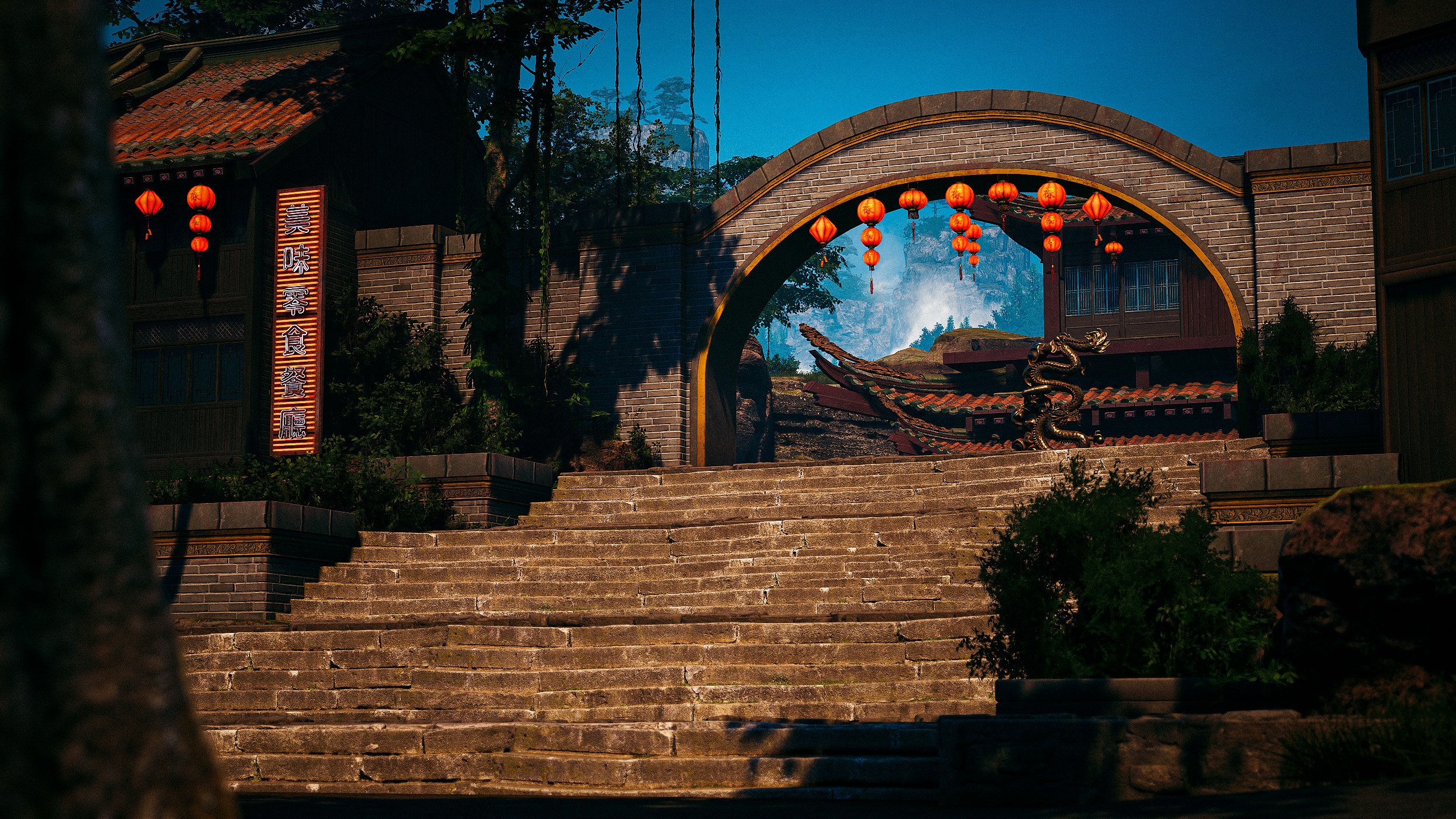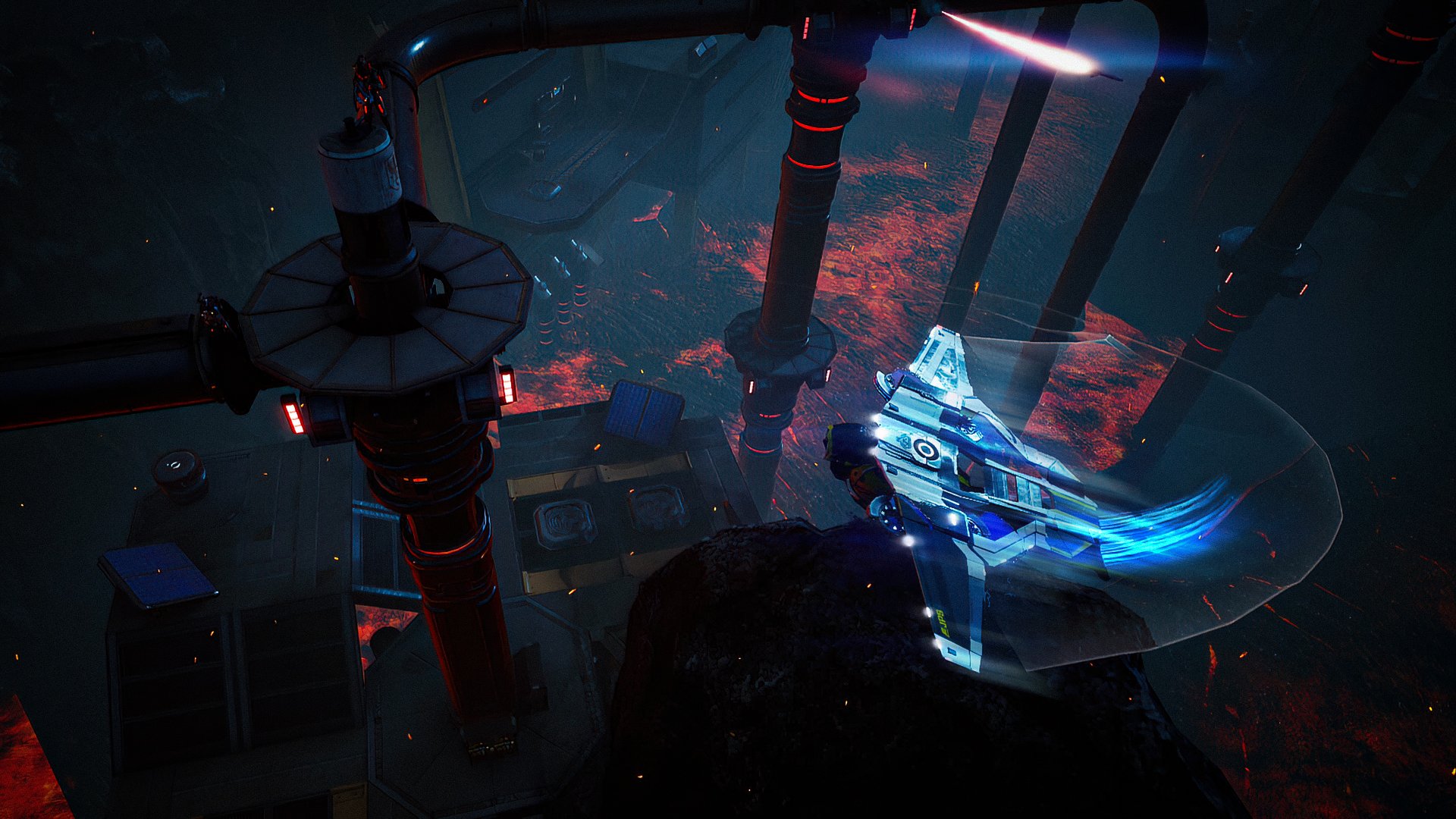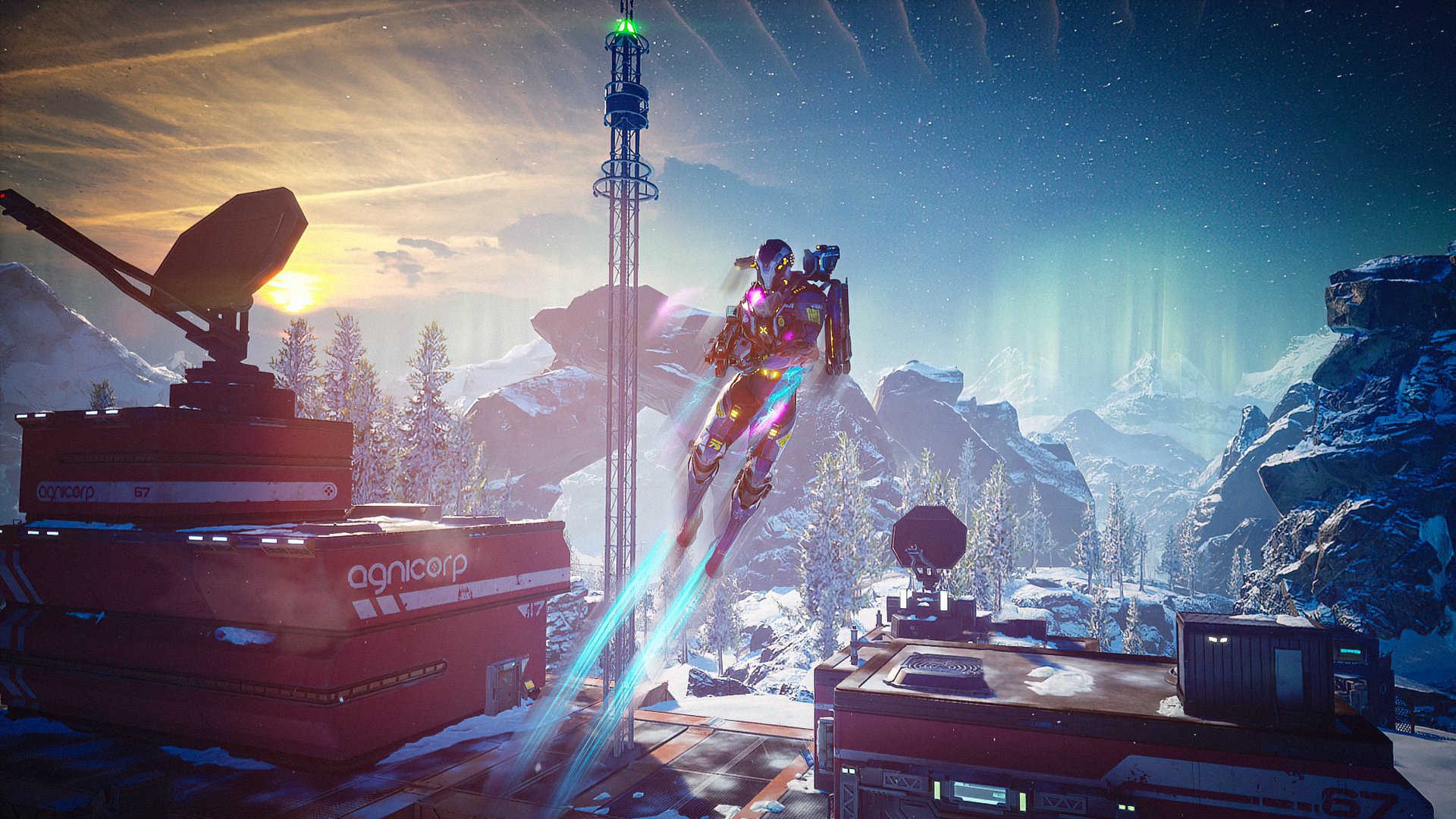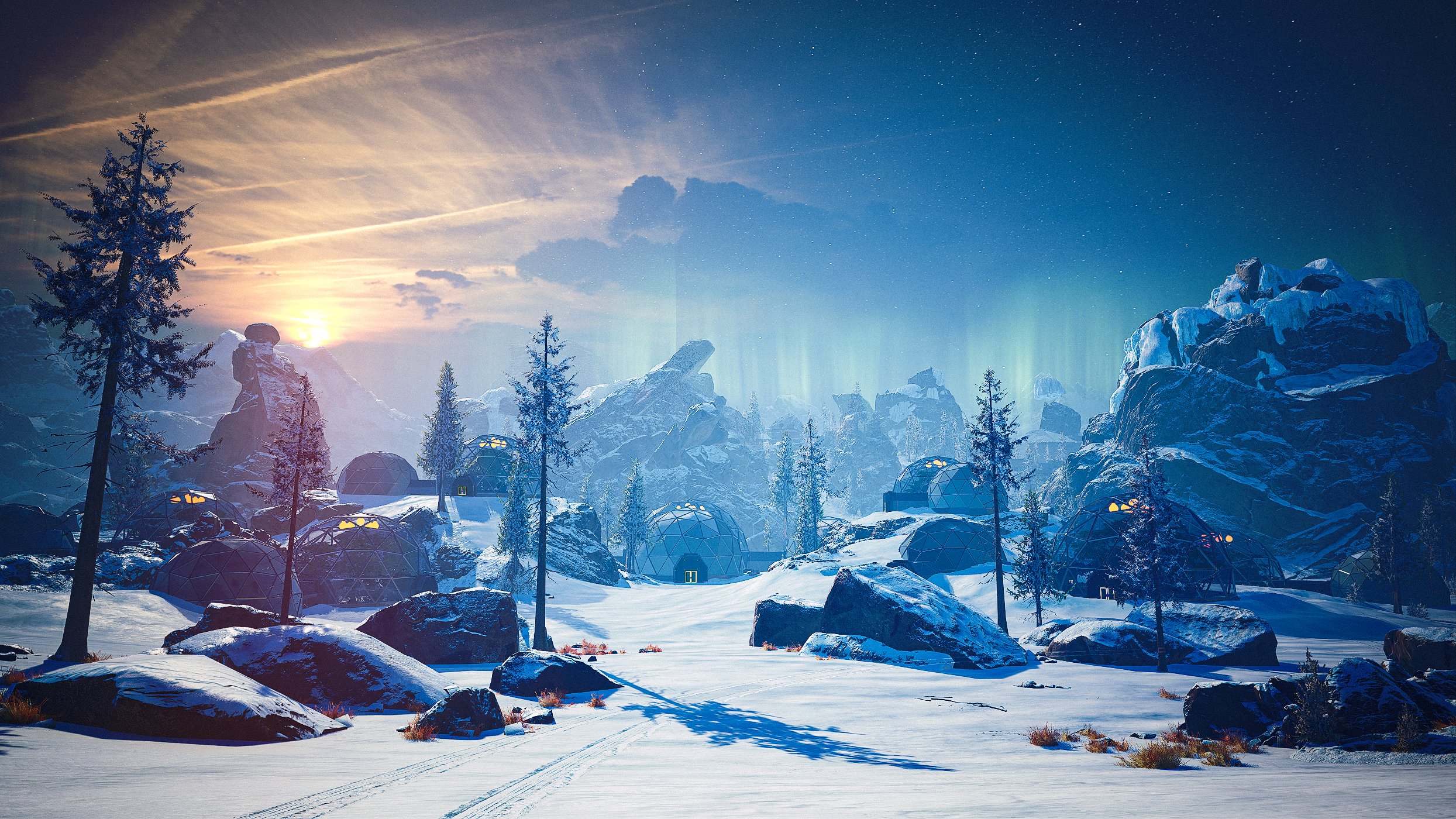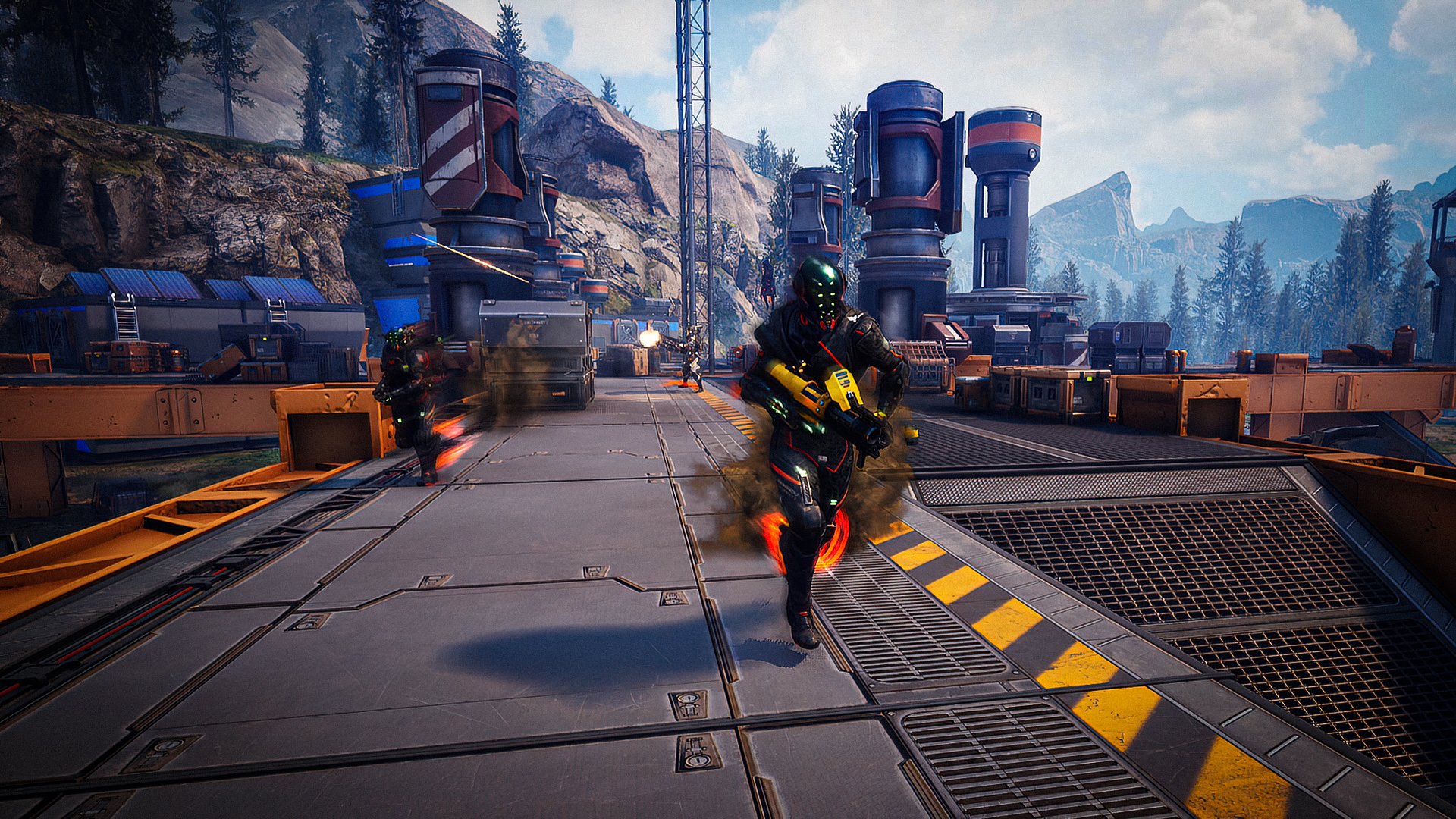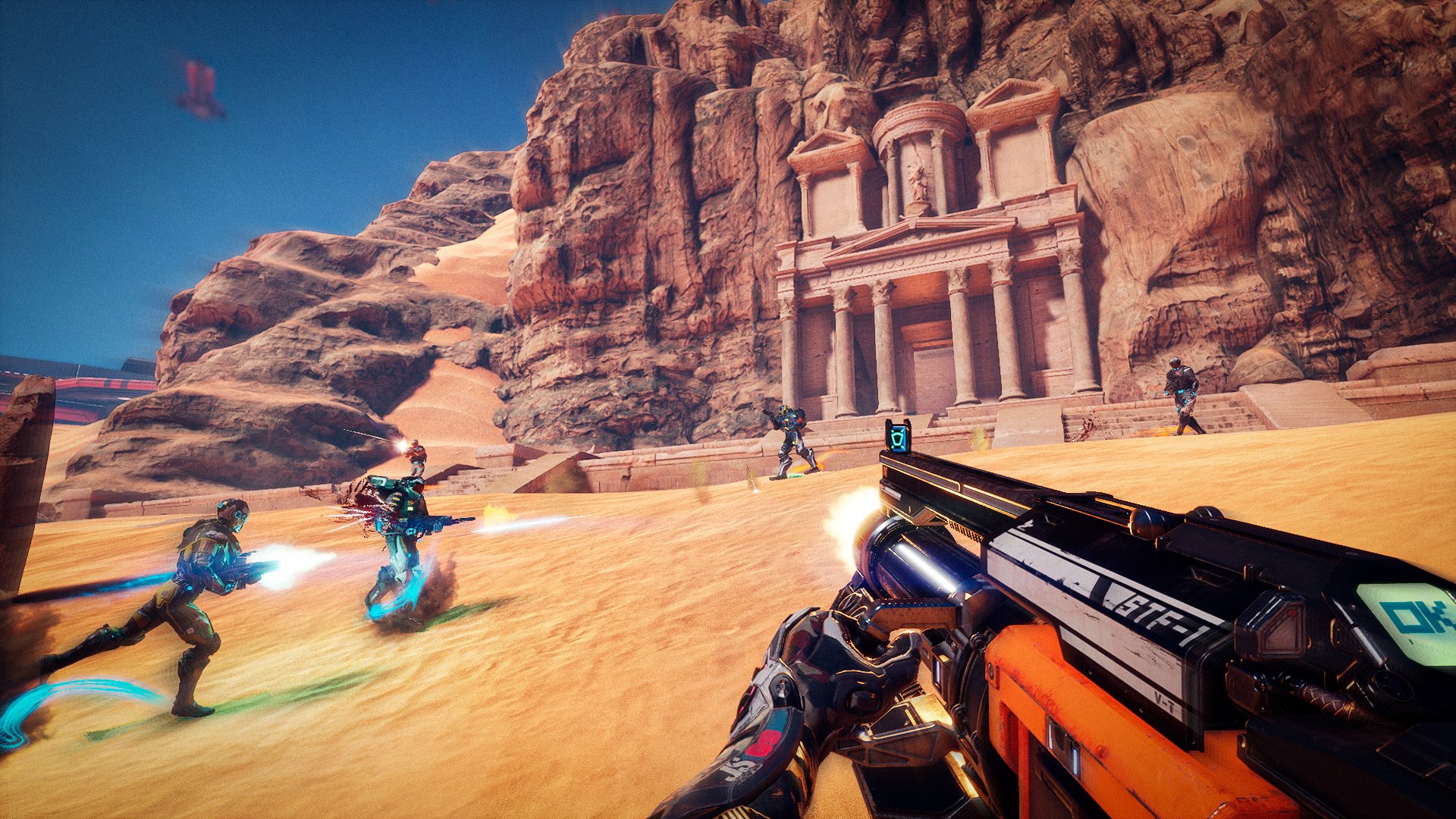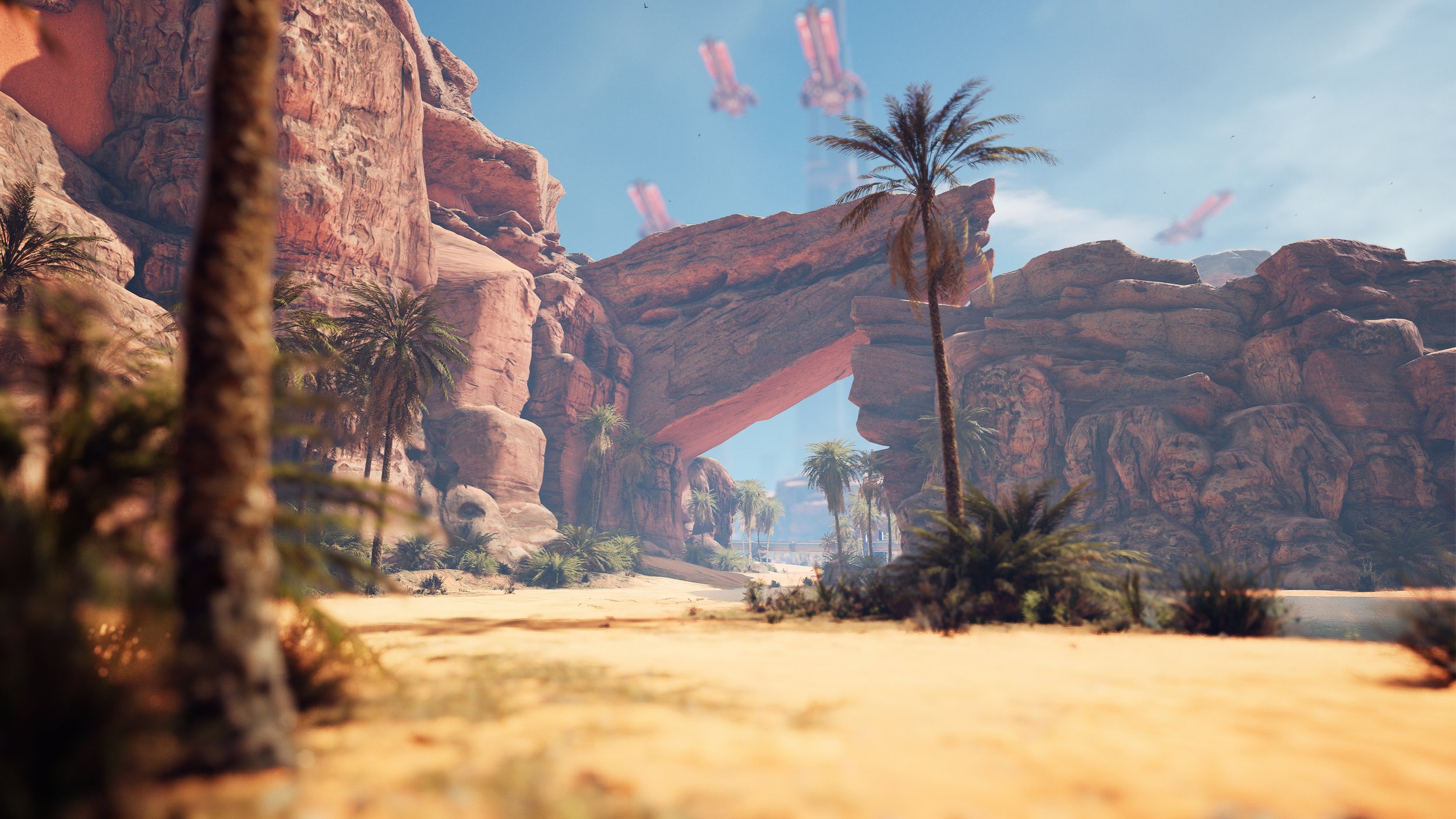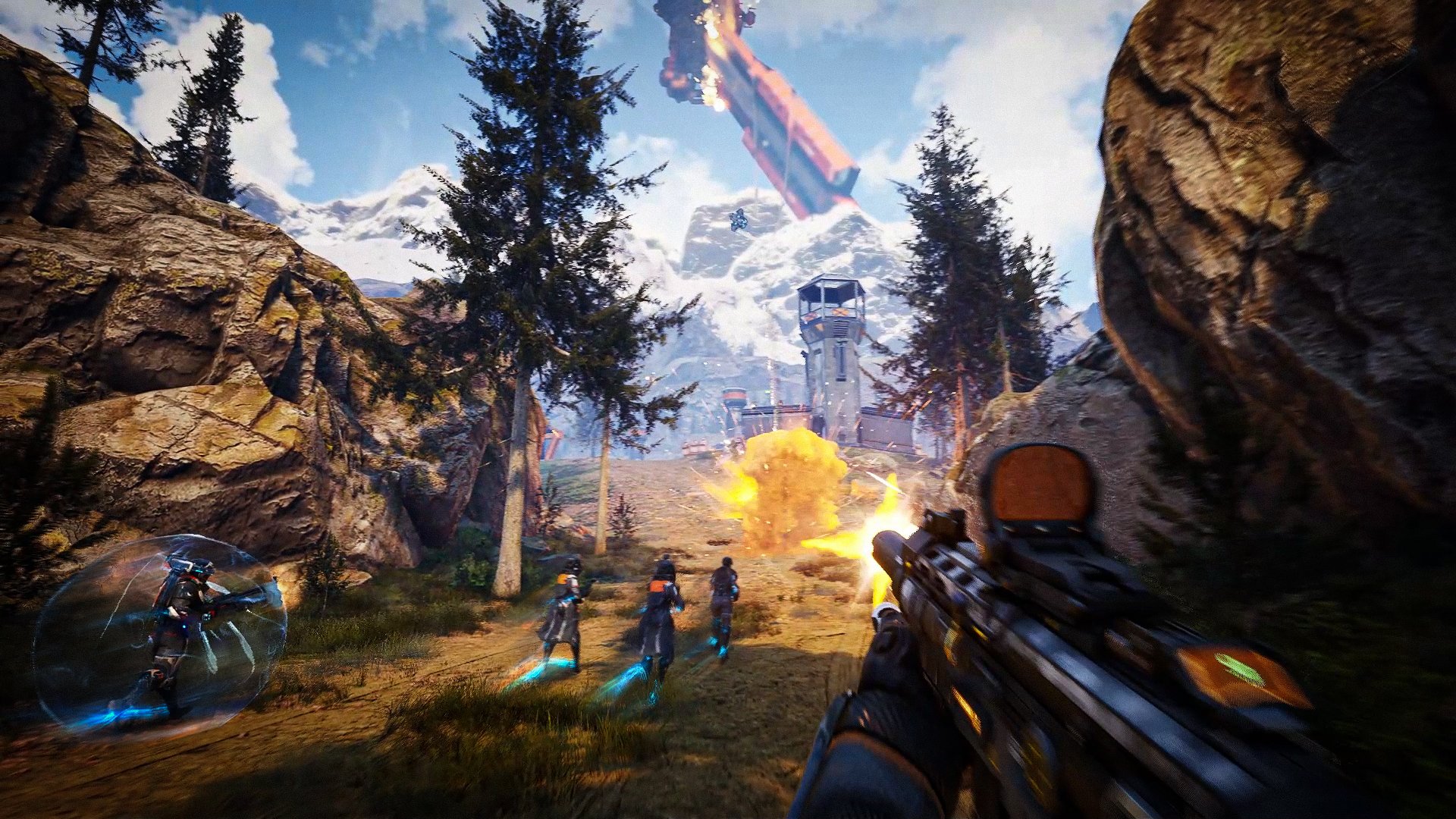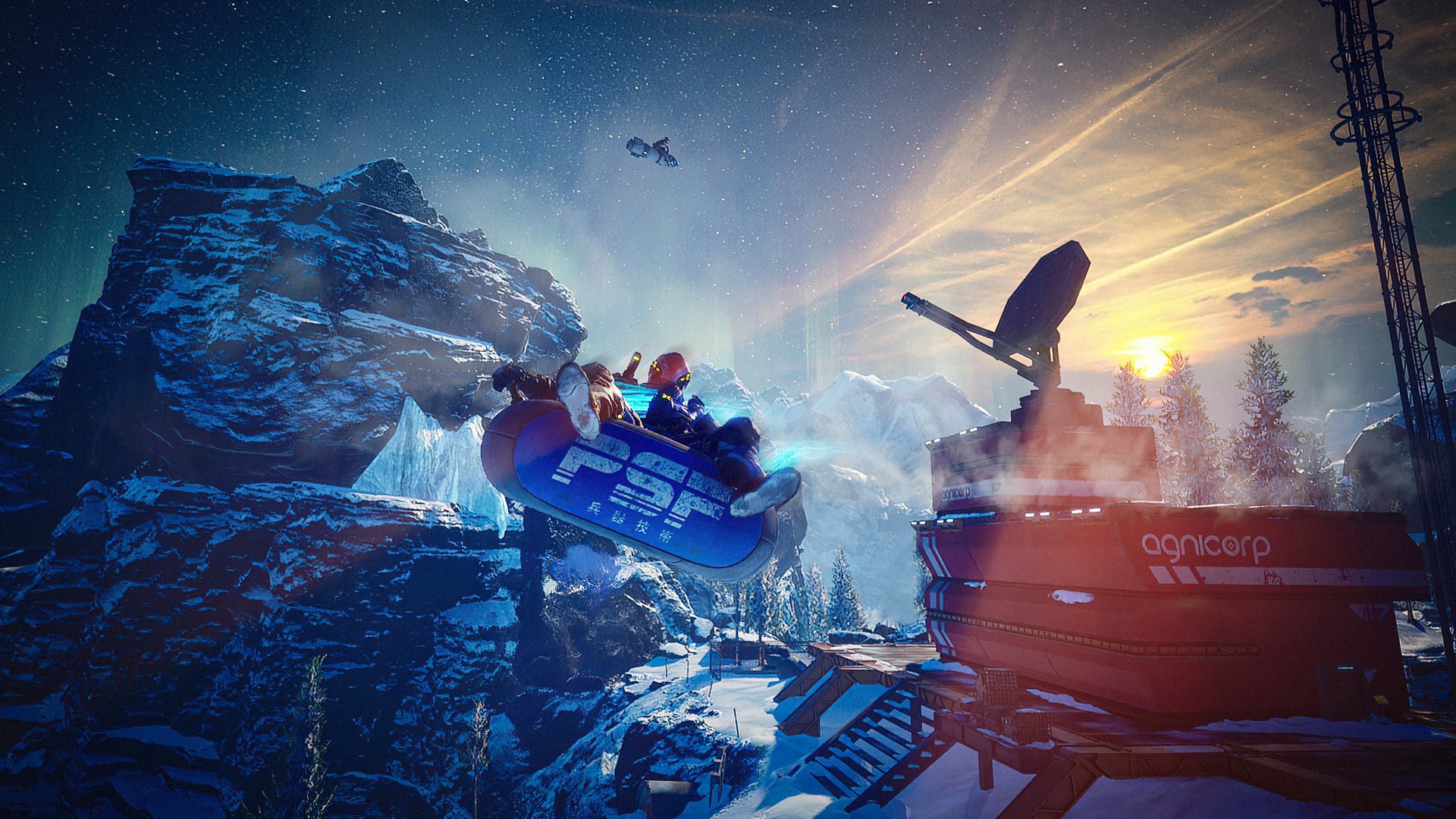LEAP is a fast paced AAA style first person shooter developed by Blue Isle studios. I was fortunate to work with a small team of very talented developers. My responsibilities for the project were art direction and concept art from which I did a majority of the design work.
The Beginning
I chose a visual direction for LEAP that was a fresh take on sci-fi based first person shooters, but also satisfied the needs of the games design. I pushed for visuals that could inspire the team and capture a new audience in a heavily competitive FPS market.
The direction also needed to solve the following artistic challenges.
-Characters that the player could invest time in from which they could customize and express themselves. We also needed to figure out an efficient way to do this with out having an asset explosion.
-These characters needed to make sense in the narrative we designed. How are they able to run super fast and jump massive heights? What would a corporate sponsored Merc look like?
-Large colorful nature based battlefields with clear landmarks the player could navigate. Efficiency was also a factor where natural landscapes are easier to build than sci-fi cities.
-An art style that could be accomplished by a very small team dev team. A realistic style was chosen to match the experience of the art team as well as giving us the option to make use of purchased assets when ever possible.
Motorcycles, Cool Helmets and exo-suits. Who doesn’t like that?
During pre-production, I personally believe in the extensive use of white boxing. Every building, weapon and vehicle should be quickly built in 3d and imported into the game. This allows designers to test quickly and figure out if the asset is something we truly need to invest time in.
From the early whitebox block outs to the final release.
Character Direction
I made our character direction a combination of cybernetics meets corporate product design. As if Nike got involved in weapons manufacturing, how would they do it? Most likely branding their name everywhere. Shape language and materials were heavily influenced from motorcycle design, barrowing from the internal mechanics as well external chassis. We also needed a design that could be reused and layered with cosmetic items as well skin variations for in-store rewards.
The story we were telling was that being a mercenary in the future wasn’t just lucrative, but also heavily sponsored by corporations.
3d Character Artist:
Samuel Compain-Englin
The initial concept art for the Merc, along with photo reference to indicate materials and mechanical designs.
Through various iterations, the Merc’s design evolved. Samuel Compain-Englin did an amazing job of translating the concept to the final model.
We eventually added new cosmetic rewards that could be earned by the player.
Art Direction for skin variations.
Environments
My direction for the environments was set using a combination of concept sketches, mood boards and reference material. We wanted our world to be like a “colorful” cyberpunk. Instead of grey and rainy cites with neon signs everywhere, we thought fighting in small town, Canada and the Jordanian desert was more appealing. Thus, our maps are mostly natural landscapes. A limited production schedule also influenced this decision since as a small team, we had to work smarter and utilize purchased assets where every possible. Nature based assets and photogrammetry tend to be a lot more accessible.
Environment Art Team:
Liam O'Hagan
Nicole Valois
Jasjot Singh
Trym Roedder
Initial direction for our Canyon Map
Concept Art by Natasha Tan
Some additional screenshots of LEAP. Made by very talented group of developers.
Weapon Direction
Our weapon design was very similar to our characters. As if popular product designers started making weapons. Heavily influenced from motorcycle and automotive design. Even the propulsion tech was inspired by the idea of an engine built into the guns for enhanced stopping power. Like the characters, this direction also made it easy to make skin variations for in-store rewards.
Weapons Artists:
Alexander Nikolaev
Stan Verbitsky
Social Media / Marketing
These trailers were our announcements for early access and the official launch date. Built using a combination of UE4’s sequencer and in game footage. I made the initial drafts of the sequences with some additional editing by Brenden Frank, which really helped to make them pop.
One of our social media campaigns involved creating a virtual persona which could act as our Q&A guy. We simply called him “The Merc”. It was quiet enjoyable to bring this character to life using UE4’s sequencer.







